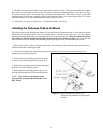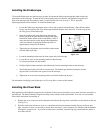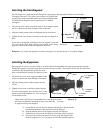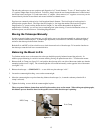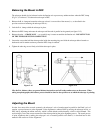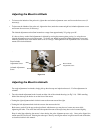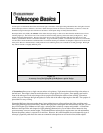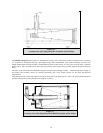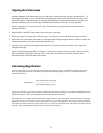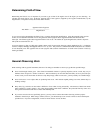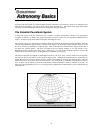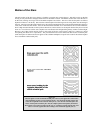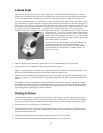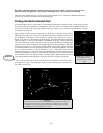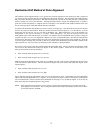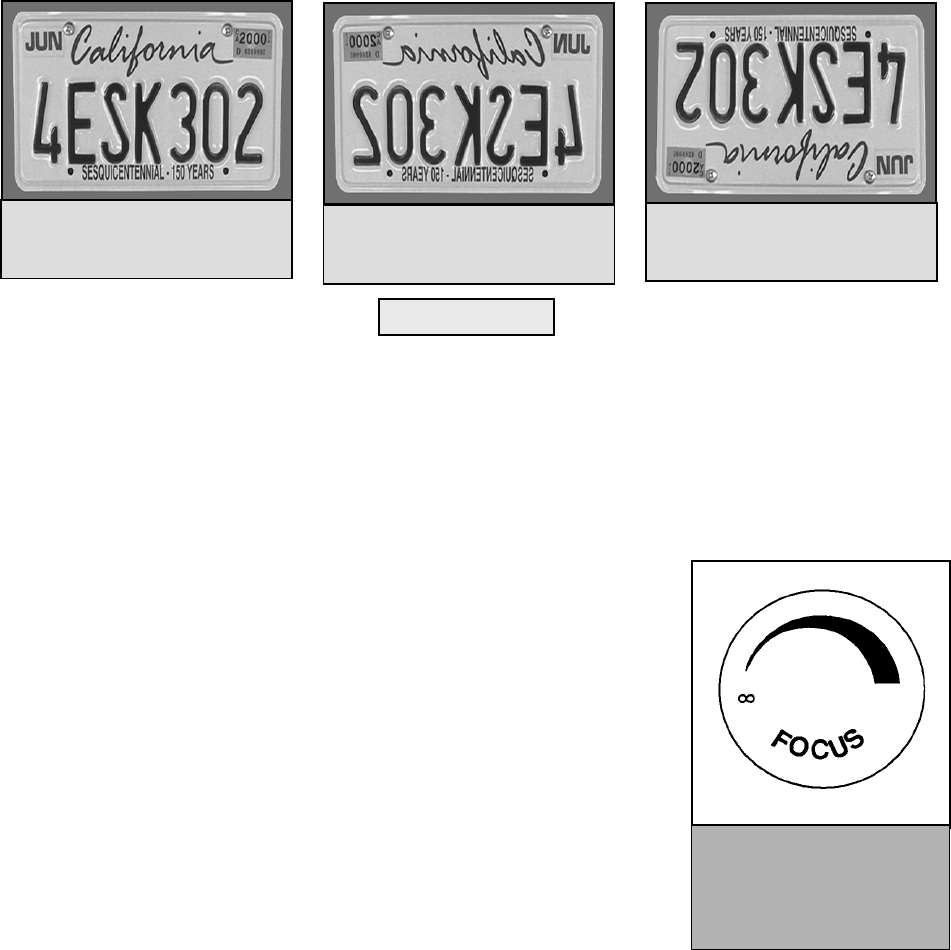
20
I
I
m
m
a
a
g
g
e
e
O
O
r
r
i
i
e
e
n
n
t
t
a
a
t
t
i
i
o
o
n
n
he image orientation changes depending on how the eyepiece is inserted into the telescope. When using the star diagonal with
fractors and Schmidt-Cassegrains, the image is right-side-up, but reversed from left-to-right (i.e., mirror image). If inserting
e eyepiece directly into the focuser of a refractor or the visual back of the Schmidt-Cassegrain (i.e., without the star diagonal),
e image is upside-down and reversed from left-to-right (i.e., inverted).
ewtonian reflectors produce a right-side-up image but the image will appear rotated based on the location of the
epiece holder in relation to the ground. Newtonian reflectors are best for astronomical use where right-side-up
oes not matter.
T
re
th
th
N
ey
d
Actual image orientation as seen
with the unaided eye
Inverted image, normal with
Newtonians and as viewed with
Reversed from left to right, as
viewed using a Star Diagonal on a
eyepiece directly in other scopes
refractor or Schmidt-Cassegrain
Fi
g
ure 3-4
F
F
o
o
c
c
u
u
s
s
i
i
n
n
g
Figure 3-5
lem on the end of
s knob shows the
rotational direction
for focusing your telescope
.
The emb
the focu
correct
g
object that is farther than the one you are currently
observing. Turning the knob counterclockwise from you allows you to focus on an object closer than the one you
are currently observing.
The Schmidt-Cassegrain focusing mechanism controls the primary mirror which is mounted
on a ring that slides back and forth on the primary baffle tube. The focusing knob, which
moves the primary mirror, is on the rear cell of the telescope just below the star diagonal and
eyepiece. Turn the focusing knob until the image is sharp. If the knob will not turn, it has
reached the end of its travel on the focusing mechanism. Turn the knob in the opposite
direction until the image is sharp. Once an image is in focus, turn the knob clockwise to
focus on a closer object and counterclockwise for a more distant object. A single turn of the
focusing knob moves the primary mirror only slightly. Therefore, it will take many turns
(about 30) to go from close focus (approximately 60 feet) to infinity.
.For astronomical viewing, out of focus star images are very diffuse, making them difficult
to see. If you turn the focus knob too quickly, you can go right through focus without seeing
the image. To avoid this problem, your first astronomical target should be a bright object
(like the Moon or a planet) so that the image is visible even when out of focus. Critical
focusing is best accomplished when the focusing knob is turned in such a manner that the
mirror moves against the pull of gravity. In doing so, any mirror shift is minimized. For
astronomical observing, both visually and photographically, this is done by turning the focus
nob counterclockwise.
ote: If you wear corrective lenses (specifically glasses), you may want to remove them when observing with an
eyepiece attached to the telescope. However, when using a camera you should always wear corrective lenses to
ensure the sharpest possible focus. If you have astigmatism, corrective lenses must be worn at all times.
To focus your refractor or Newtonian telescope, simply turn the focus knob located directly below the eyepiece
holder. Turning the knob clockwise allows you to focus on an
k
N



